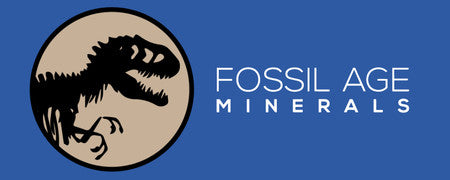We’ve collected and put together a ROAR-some T-Rex fact file of knowledge and information about one of the best-known dinosaurs in this blog so that you can wow your friends and family with your expert knowledge. Are you ready to learn more about this mighty dinosaur? Here’s what we know about one of the world’s favorite hunters from Tyrannosaurus Rex fossils:

Terrifying T-Rex Facts
Its name means “King Tyrant Lizard” Tyrannosaurus Rex (now commonly known as T-Rex), and it was named in 1905 by American Paleontologist Henry Fairfield Osborn. The name is derived from Greek and Latin words that mean King Tyrant Lizard. Greek words tyrannos, meaning “tyrant”, sauros, meaning “lizard,” and the Latin word Rex, meaning “king,” make up the complete name of this giant prehistoric predator.
T-Rex was first discovered in Colorado.
The first Tyrannosaurus Rex remains were discovered almost 150 years ago, in 1874, by geologist Arthur Lakes. He found 2 teeth in Colorado, USA, although, at the time, they were believed to belong to the Deinodon.
Further fossils and fragments of Tyrannosaurus Rex were found in the following years, and the first partial skeleton was found in 1900. T-Rex remains have since been found all over Canada and the US.
T-Rex is not from the Jurassic Period.
Despite famous and popular depictions of the T-Rex in the Jurassic Park and Jurassic World films, the T-Rex didn’t actually exist in the Jurassic Period at all. The Tyrannosaurus Rex lived at the very end of the Late Cretaceous period, about 90 to 66 million years ago. Although other species of predatory dinosaurs would have existed in the Jurassic Period (which ended 150 million years ago), the T-Rex wasn’t one of them.
T-Rex has around 60 bone-crunching teeth.
The T-Rex jaw held around 60 individual serrated teeth, each one of them as sharp as a knife. A T-Rex tooth would have protruded around 6 inches, about the size of a banana, and was perfect for gripping, ripping, and throwing prey up into the air before catching and swallowing them whole. The biggest T Rex tooth that has been found is 30cm long – that’s as long as a standard ruler!
If that wasn’t scary enough, the T-Rex jaw could close with a whopping 6 tons of pressure, and they were capable of ripping up to 100kg of flesh off their prey in a single bite. Best to stay out of their way!
T-Rex ate other dinosaurs.
Their powerful jaws and impressive teeth made the T-Rex a formidable hunter, and it’s perhaps unsurprising that they were carnivorous. It is unknown whether the T-Rex hunted alone or in packs, but they certainly gobbled down other dinosaurs.
Scientists believe that T-Rex would also have scavenged, stealing prey from other predators, and there is even evidence that they may have eaten each other.
The T-Rex skull was absolutely massive!
The longest T-Rex skull discovered was 1.3 meters (over 4 ft) long and the skull bones were thick and braced for crushing. Having such a large skull means that the Tyrannosaurus Rex had a relatively big brain compared to other predators, suggesting that they were clever hunters. Their skulls contained an especially large cavity to house the part of their brain responsible for their sense of smell, meaning they could easily detect food and other predators.
The T-Rex had disproportionately small arms.
In contrast to the giant Tyrannosaurus Rex teeth and head, powerful legs and towering height, the T-Rex had very small arms. Although T-Rex arms would have been strong, they wouldn’t have been long enough to reach its mouth, leaving scientists debating the function of these somewhat comically short arms, with some believing that they may have been useful for close range fighting.
You might be able to outrun a T-Rex.
While we don’t recommend testing this theory to find out, it’s very likely that the T-Rex would have moved a lot more slowly than movies like Jurassic Park would have us believe.
Weighing in at 7 tons, there’s no way that the T-Rex’s bones would have been able to withstand running at the speeds depicted while chasing after that Jeep. Running too quickly would put enormous pressure on its bones and put them at risk of shattering. We now know that its top running speed would have been around 10 kmph.
T-Rex is one of the biggest land predators ever.
Weighing in at 7000kg and standing at an enormous 12 feet tall, it stands to reason that T-Rex is one of the most sizable land predators of all time. In fact, at 40 feet in length, a T-Rex’s size is comparable to that of an American school bus. Pretty huge right?
But, actually, the T-Rex wasn’t the biggest ever predator to walk on land. The title of biggest land predator of all time actually goes to the gigantic Spinosaurus, which weighed at least 7 tons, was 12 feet high, and measured in at an impressive 60 feet in length. These days, the largest land predator on Earth is the Polar Bear.
If you’re dinosaur-mad, then you should come and explore the prehistoric collection at Fossil Age Minerals. We've got some amazing Tyrannosaurus Rex fossils for sale that'll surely ignite your curiosity about these beasts.


